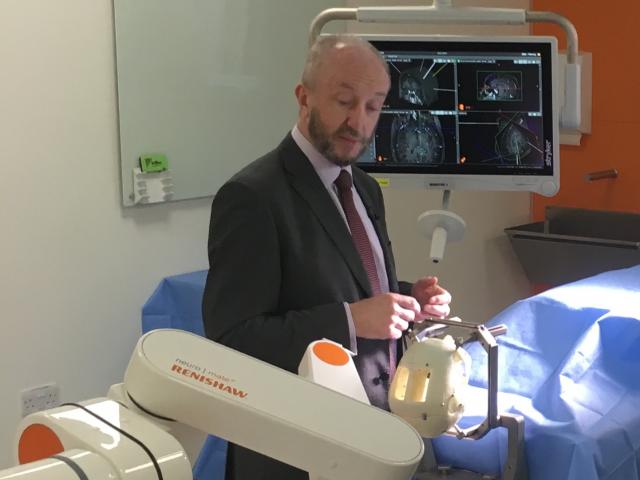
First robotic ‘neuromate’ in Wales aids epilepsy surgery
The BRAIN Unit is celebrating the landmark stereoelectroencephalography (SEEG) procedure, the first of its kind to be carried out with robotic assistance in Wales.
The ‘neuromate’ robot, named by creators Renishaw, assisted Professor Gray, at the University Hospital of Wales, during surgery while he used intracerebral electrodes to measure electrical signals in the brain.
Patient Denise Casey, from Neath Port Talbot, was diagnosed with epilepsy when she was 31, suffering up to six fits every day for the past 20 years.
With the robotic arm, it took Professor Gray 55 minutes to accurately identify and operate on the epileptogenic zone in a procedure that would normally take four hours. Follow-up surgery a week later was performed in the hope of relieving Denise of her epileptic symptoms.
“The Renishaw robot is a significant step forward for epilepsy surgery in Wales.
“It will enable us to investigate and treat even the most complex cases to achieve seizure freedom for our patients. In collaboration with the BRAIN Unit, it will also enable us to perform leading research for measuring brain signals and delivering therapies directly into the brain, across many neurological diseases,” said Professor Gray.
Denise appeared alongside Professor Gray on BBC Wales television to discuss her experience. Watch the interview here.
First published: @ResearchWales Issue 2, June 2017